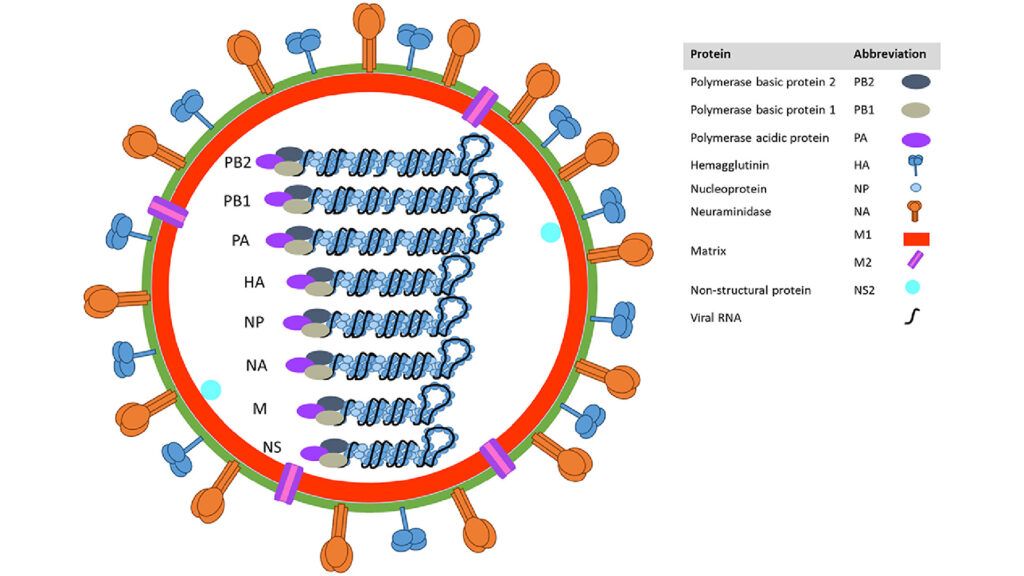
The flu may not always be thought of by most people as a serious illness because this disease has the symptoms of headaches, runny nose, cough and muscle pain can make people confuse it with a heavy cold. The seasonal influenza kills up to 650 000 people every year, due to the World Health Organization (WHO). That’s why, this article we will talk about the tips staying healthy during flu season for our audiences to understand and protect themselves against the flu.
KNOWING ABOUT INFLUENZA
Based on the Center for Disease Control and Prevention (CDC) of the United States of America stimulated that Influenza is an acute respiratory disease caused by infection with influenza viruses. The incubation period ranges from 1 to 4 days. Peak virus shedding usually occurs from 1 day before onset of symptoms to 3 days after. Typical features of influenza include abrupt onset of fever and respiratory symptoms such as cough (usually nonproductive), sore throat, and coryza, as well as systemic symptoms such as:
- Headache
- Runny nose
- Muscle aches, and
- Fatigue.
The clinical severity of infection can range from asymptomatic illness to primary viral pneumonia and death. Acute symptoms generally last 2–7 days, although malaise and cough may continue for 2 weeks or longer.
The Complications of influenza infection include secondary bacterial pneumonia and exacerbation of underlying chronic health conditions.
The Complications occurring in children can include otitis media, febrile seizures, encephalopathy, transverse myelitis, myositis, myocarditis, pericarditis, and Reye syndrome.
Aspirin and other salicylate-containing medications are contraindicated for children and adolescents with influenza-like illness, as their use during influenza infection has been associated with the development of Reye syndrome.
INFLUENZA VIRUSES
According to the Center for Disease Control and Prevention (CDC) Influenza viruses can be divided into 4 types: A, B, C, and D.
- Influenza type A viruses: Are divided into sub types based on surface proteins called hemagglutinin (HA) and neuraminidase (NA). There are 16 hemagglutinin and 9 neuraminidase sub types that circulate in a variety of avian species, and a restricted subgroup of these have infected other animals, such as pigs, horses, cats, ferrets, dogs, and marine mammals (seals and whales).
- A few bat species were recently shown to be infected by influenza viruses originally designated as new influenza A sub types H17N10 and H18N11.
- However, these viruses were shown to be incompetent for re assortment with other influenza A viruses, a hallmark of the species, indicating that they are not true influenza A viruses.
- The two influenza A virus sub types have co circulated in human populations since 1977: influenza A (H1N1) and A (H3N2).
- Re assortment between influenza A (H1N1) and A (H3N2) viruses resulted in the circulation of A (H1N2) virus during the 2001-02 and 2002-03 influenza seasons.
- In April 2009, a novel influenza A (H1N1) virus, influenza A(H1N1) pdm09-which was different from currently circulating influenza A (H1N1) viruses – emerged and its subsequent spread resulted in the first pandemic of the 21st century.
- Influenza B viruses: Are not divided into sub types, but are further broken down into 2 lineages: Yamagata and Victoria.
- Influenza type C viruses: Are not associated with severe disease, epidemics, or pandemics.
- Influenza D viruses: Primarily affect cattle and are not known to infect or cause illness in people, so neither will be discussed further here.
FLU PANDEMIC IN THE WORLD
These diseases (Influenza A and B) viruses both undergo gradual, continuous change in the HA and NA proteins, known as antigenic drift. As a result of these antigenic changes, antibodies produced to influenza viruses as a result of infection or vaccination with earlier strains may not be protective against viruses circulating in later years. Consequently, yearly epidemics usually occur in populations, and multiple infections can occur over a person’s lifetime. Antigenic changes also necessitate frequent updating of influenza vaccine components to ensure that the vaccine is matched to circulating viruses.
In addition to antigenic drift, influenza type A viruses can undergo a more dramatic and abrupt type of antigenic change called an antigenic shift, which occurs when viruses belonging to a new influenza A sub type bearing either a novel HA protein or novel HA and NA proteins infect humans.
A novel HA protein can include a virus of the same sub type but be dramatically antigenically different, as was seen during the 2009 H1N1 pandemic, where the HA likely came from a swine reservoir. While antigenic drift occurs continuously, antigenic shift occurs infrequently. When antigenic shift does occur, a large proportion, or even all, of the world’s population has no antibody against the new virus. If the novel influenza A virus causes disease and is efficiently transmitted among humans, a worldwide epidemic called a pandemic may result.
Novel influenza A viruses, but not influenza B viruses can cause influenza pandemics. During the 20th century, pandemics occurred in 1918 (A[H1N1]), 1957 (A[H2N2]), and 1968 (A[H3N2]).
In April 2009, the influenza A(H1N1)pdm09 virus emerged to cause the first influenza pandemic in more than 40 years.
Currently, Covid-19 pandemic 1,196,944 case and 64,577 were died among 205 countries and territories around the world and 2 international conveyances according to the Worldometers Website by April 05, 2020 @ 5:30 AM (GMT+7)- Cambodia Time. Please check how to avoid Covid 19 for more information and protection from this virus.
FLU SEASON
The people think that the flu is a seasonal influenza, so called because it comes around in the coldest season twice a year. Once in the Northern hemisphere’s winter, and once in the Southern hemisphere’s winter in temperate zones of the world, and circulates year-round in the tropics and subtropics.
FIVE THINGS TO DO IF YOU HAVE A FLU
In case we are getting a flu, WHO recommended to practice 5 things below as part of the taking care your health to be better.
- Cover your mouth and nose when coughing or sneezing
- Wash your hands regularly
- Drink plenty of water and rest
- If you have a vulnerable immune system, you may need antivirals
- Don’t take antibiotics – they don’t work against cold or flu viruses
FIVE WAYS TO AVOID GETTING THE FLU
We must take care ourselves every day not wait until we get the flu. The better we care the better for our health, That’s why WHO has announced five measures to protect our health against the influenza as following:
- Get the flu vaccine every year – even if you do get the flu, your symptoms will be milder
- Avoid being around people who are sick
- Try not to touch your eyes, nose or mouth – germs are most likely to enter your body this way
- Clean and disinfect surfaces if you are sharing a home with someone who is sick
- Wash your hands regularly
In cases you want to buy any products from the Amazon Store please CLICK HERE, we are very appreciated for your support by ordering products from this link because the vendors will provide us the commission of your purchasing.
Thanks for reading this article, if you have any questions, doubts, or discussions, please drop your comments below.
About The Author
Financial consultant



Thanks for putting together these recommendations as they are the first defense line against viruses. We live exposed to many types of diseases, some of them come from outside (like viruses in this case) and from within ourselves (cancer). we develop cancer cell every day, our body has the way to deal with them. When it manifests as a perceivable disease affecting one of our organs is because we have already lost some battles against it.
The same happens with viruses. Most likely we receive hundreds of them within our bodies on a yearly basis, only when we become vulnerable for some reason (bad nutrition, extreme levels of exposure, hazardous exposition to a certain type of virus we have a greater generics vulnerability or even emotional disadvantageous conditions) we receive them and get actually infected.
In any case, all in our hands should be done in order to get protected against any type of viruses. The actions you listed along with a good understanding of the way they work will help us to keep ourselves and our beloved ones healthy.
Thanks for your idea of sharing in this comment, it is the great once that reader can add more to the article because we have just talk about the external and you add the internal.
If you have respiratory symptoms (cough, nose leakage, shortstop of breath) and/or elevated temperature and back 14 days you have been staying in the infected area by the telephone of your physician or the competent epidemiologist. Practice general hygianic Measures after contact with animals and animal products.
Very informative.
Thanks for the contents!
Yes, that’s right and thanks for your comment and idea
I enjoyed your article about staying healthy during flu season. Great knowledge about the influenza and The Center for Disease Control and Prevention as a good source. Headache, Runny nose, Muscle aches, and Fatigue is all the symptoms I get when I get sick. (at least has been over the years) I especially like your insight about H17N10 and H18N11. Serious topics that I think people have been ignoring for far too long. Great article!
Yes, the source of this article we have token from the CDC and WHO and thanks for your sharing your idea